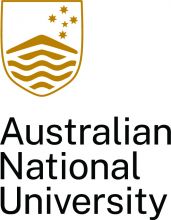Proposals for the “managed growth” of Australian higher education include recipes for managed decline, as institutions face progressively lower enrolment limits each year.
From 2026, each of the 45 universities and colleges that receive teaching grants will be subjected to “managed growth targets” (MGTs) specifying how many students they can enrol. The targets will be adjusted depending on student demand, institutional performance and “other market structure issues” such as the need to make space for new providers, according to a Department of Education discussion paper.
Institutions that fail to reach their enrolment quotas could be given smaller targets the next year, “ensuring the allocation of places reflects student demand”, the paper says.
Each institution’s “funding floor” – a safety net to protect it from tumbling enrolments – could also be progressively lowered, the paper explains. “For [a] universit[y] that continue[s] to enrol below its MGT, its funding floor amount will decline…year-on-year in nominal terms.”
The government plans to replace the current system for rationing domestic higher education places, effectively through a dollar limit on each institution’s teaching subsidies, with a maximum number of subsidised places.
The target would constitute a “hard cap” on each institution’s enrolments. Universities would not receive teaching subsidies for any enrolments exceeding their quotas, and – unlike now – they also could not accept tuition fees from those additional students.
Australian National University policy expert Andrew Norton said this arrangement, like the proposed caps on international students, would encourage universities to “undershoot” their quotas rather than risk financial pain for over-enrolling.
This would run contrary to the stated goal of increasing tertiary education participation in line with the Australian Universities Accord’s recommendations.
Professor Norton said a demand-driven approach would be preferable. “Students should study where they want to study rather than where the bureaucracy thinks they should be studying,” he said.
“To some extent, they simply won’t study where the bureaucrats want them to study, if it’s inconvenient or not a course they want to [do]. We tend to assume that they’ll just want to go to university, which I don’t think is actually true for important subsections of the market.”
But Professor Norton said a formal system for reducing enrolments was preferable to the default approach of allowing each institution to simply retain the previous year’s allocation. “This is a second-best way of saying we’re not going to endlessly maintain the funding of universities that can’t attract students.”
He said the demand-driven system introduced under the Gillard government had allowed for extremely fast growth, with some universities almost doubling their enrolments within five years. The newly proposed system would help contain massive upsurges at some institutions at the expense of others, he said.
The paper says the proposed Australian Tertiary Education Commission (Atec) will consider whether teaching subsidies should be extended to more institutions, but only publicly funded ones.
The paper also confirms the government’s intention to offer “managed demand-driven funding” to students with disabilities or from disadvantaged or rural backgrounds. Such students who meet entry requirements will be guaranteed university places, but not necessarily the places they want.
If their preferences are exhausted “they will be offered places in other similar courses”, the paper says.
A separate discussion paper confirms that Atec will not absorb the Tertiary Education Standards and Quality Agency or the Australian Research Council, as was originally flagged.
Register to continue
Why register?
- Registration is free and only takes a moment
- Once registered, you can read 3 articles a month
- Sign up for our newsletter
Subscribe
Or subscribe for unlimited access to:
- Unlimited access to news, views, insights & reviews
- Digital editions
- Digital access to THE’s university and college rankings analysis
Already registered or a current subscriber?










